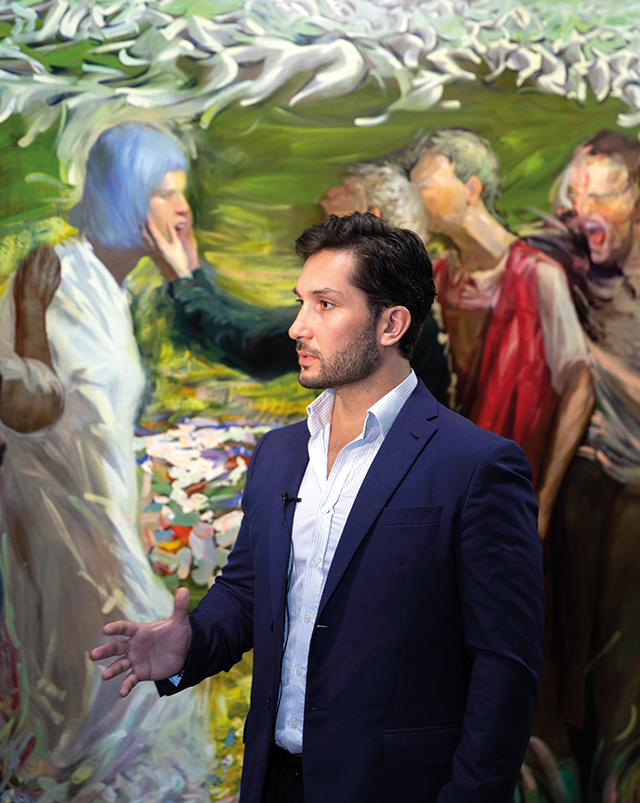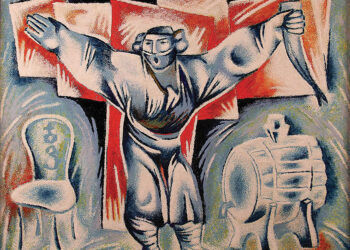Noli me tangere (John, 20:17), – says the risen Christ to Mary Magdalene while still on the verge of the physical and metaphysical worlds, where physical contact between them can no longer take place. Levan Songulashvili’s canvas with the same title can be perceived as completely detached from its original evangelist source as a way of exploring the concepts of touch, spiritual metamorphosis, and transitory mental states.
The canvas depicts characters that are frozen at the moment of touch. The background presents interwoven silhouettes, remains of bodies, biological masses, the ruins of the sky, and the shells of blackbirds. The evolutionary vortex they jointly create becomes part of an endless spinning. Like another monumental work of Levan Songhulashvili, Elysium, they are shown with their backs to us, while the depths of the chaos unites their bodies in a state of vaporization, faded motion that connects them to the horizon, giving birth to the figures of children who stare at us.
In the center of the canvas, the procession of the human metastases carries a female body as if it wants to dissect the space with the help of an imaginary crucifixion. Why are these particular figures born from these blurry currents of turmoil and transformation, the tributaries of individualist hordes?
Here, we can easily recognize a child who was lost in a war. He happens to be the smallest inhabitant of the vast canvas. His persistent concreteness makes us think that the arrangement of the main characters and the accompanying background noise is entirely conditional and accidental. The imaginary movement continues to let the ghosts emerging from the work’s depth appear in the fore. We see their fading faces and the characters who, this time, join the spaces of a distant horizon. The child’s figure gradually approaches us, grows, and takes its place.

In the right corner, we see the bird mines, the explosion of which creates the colors of the canvas. The fire that captures the grass slowly engulfs the bodies of the images. Everything transforms, with the author wanting to register a moment which is hard to catch in terms of changes and time.
One can feel that there are several times being acted out simultaneously on the canvas. They transform the spiral movements, an incredible and exciting image of inner transformation in an endless process. As if everything has happened, happens, and will occur at the same time. With Noli Me Tangere, Levan Songhulashvili creates a crack in our consciousness where the past, present and future will collide to show us the objects and ourselves from the perspective of this wholeness.
Noli Me Tangere is a work that changes with every touch of a gaze. No matter how many times one looks at it or is being looked at by the image, they will always see it and be seen for the first time.
***
LEPL Adjara Museum – Museum of Art and Window Project presents an exhibition of Levan Songulashvili’s work Noli Me Tangere, at the State Art Museum of Adjara until August 25th.
By Lekso Doreuli














